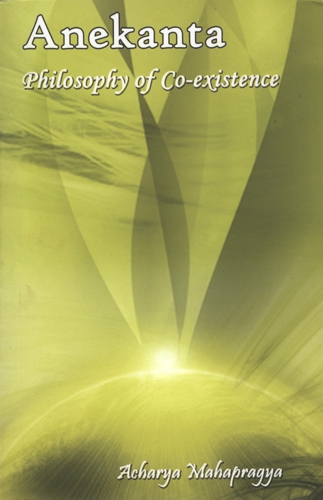Chapter 4

The Right Perspective of Anekānta
The Meaning of the Term Anekānta
Anekānta is lexically a negative term, but substantially it is not negative. Anekānta conveys the relativity of substance and mode. It is not possible to have existence of only substance or only mode, that is to say, substance and mode cannot exist without each other. The very nature of element being anekāntika, the term ekānta cannot be used to comprehend it. Aneka does not mean 'indefinite' or 'infinite', but it means 'more than one'. Element is having three characteristics hence 'aneka' does not mean indefinite, it does not designate only the infinity of modes, it does not mean only 'infinite'.
Modes are successive attributes. Infinite modes are not possible in a single substance simultaneously. For they do not originate simultaneously.
The statement that an object has infinite attributes is available. This means that an object is capable of undergoing infinite modifications. It is only on account of this capability that without giving up its own nature, it goes on transforming itself into various forms.
Why there was the Rising of Anekānta?
The element (sat) or the substance (dravya) is object of knowledge. Naya, anekānta and syādvāda are essentially the forms of knowledge, and are the means to know it. Sometimes we have a propensity to know it wholly, sometimes part by part. The attempt to know the same element through various propensities forms the basis of nayavāda, anekāntavāda and syādvāda.
The doctrine of naya is the process of knowing the element part by part. From substantial naya, the substance is a real object; the mode is an unreal object. From modal naya, it is the vice versa.
The substantial naya is the standpoint to comprehend the substance; the mode does not fall in its domain, but it does not mean that it denies the mode. Therefore, though aikāntika, such standpoint is a valid point of view (naya). If the substantial stand-point denies the mode, it would become invalid (durnaya). Similarly the modal point of view comprehends the mode, but it does not deny the substance.
Therefore, though partial, it is a valid view-point (naya). If it denies the substance, it, being absolutely aikāntika, would become invalid. The non-relative one-sided view has created many problems in the field of philosophical thought. Anekānta provides a solution to those problems. If substantial or modal nayas were to be non-relative, anekānta would not have arisen. The element has an innate capacity of changing and change is thus a part and parcel of element. Permanence and change cannot be separated totally; they cannot exist independently. It is to deny their absolutistic views that non-absolutism arose.
What is Syādavāda?
Anekānta took birth on the basis of inter-dependence of substantial and modal view-points. Syādvāda expresses that very inter-dependence. Anekānta has two aspects: permanent and temporary, existence and non-existence, general and particular, one and many, expressible and inexpressible. What unites these aspects is proved through syādvāda. Gautama is reported to ask, "Is the ratnaprabhā earth permanent or temporary?" Mahāvīra answered, "it is partly permanent and partly temporary", syādavāda accepts both the thesis and the antithesis. How could the contradictory attributes of permanence and transitoriness co-exist together? The question is answered by Mahāvīra,"Ratnaprabhā earth is permanent from substantial point of view, temporary from modal point of view". Naya, anekānta and syādvāda - all these three are useful in the field of metaphysics.
 Acharya Mahaprajna
Acharya Mahaprajna

